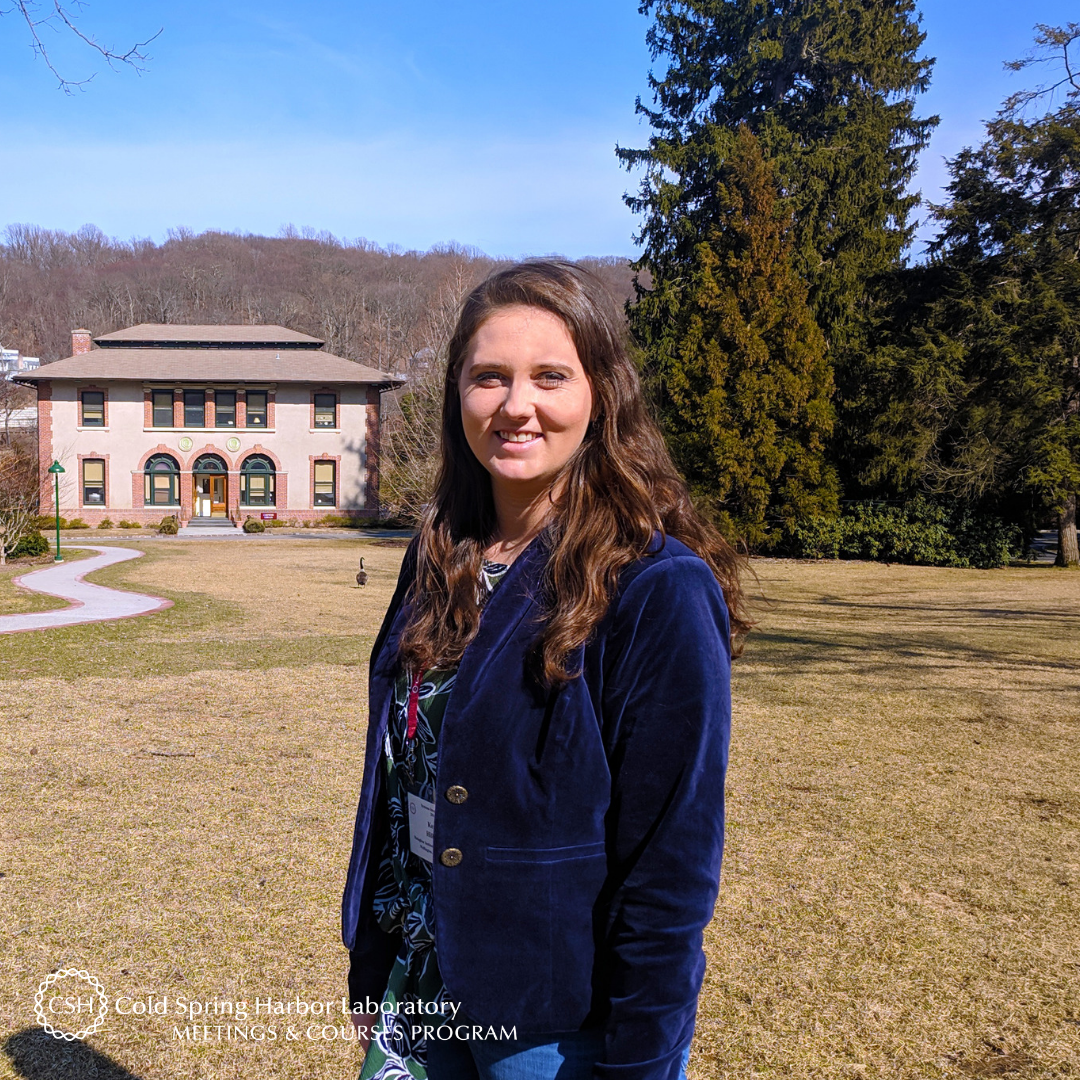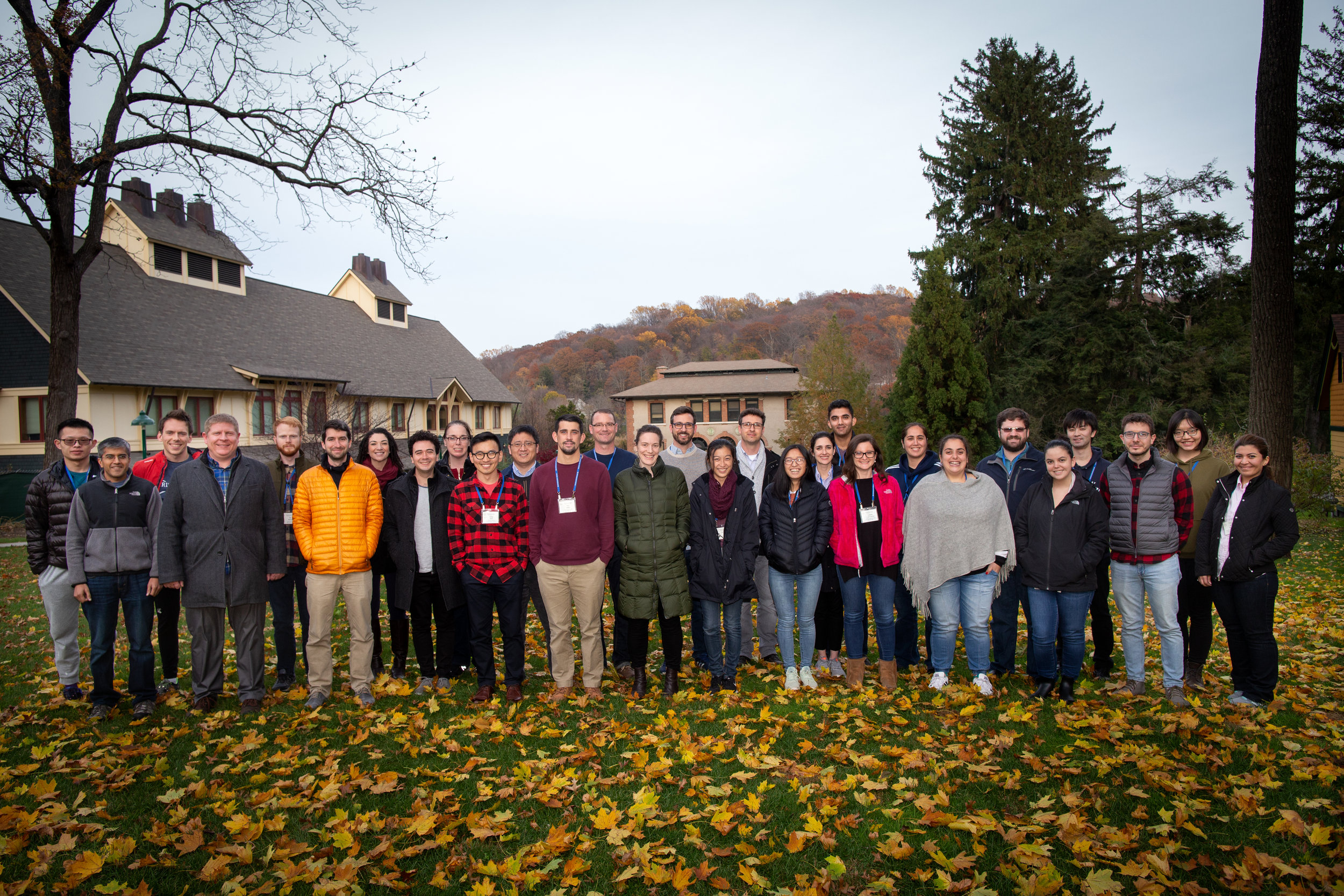Meet Kaavya Krishna Kumar of Stanford University. A member in Brian Kobilka’s lab, the postdoctoral fellow made her maiden voyage to CSHL to take part in the Cryoelectron Microscopy course (CryoEM). A grid freezing competition was held during the course and Kaavya was part of the winning team, returning to Stanford with bragging rights.
What are your research interests? What are you working on?
I am interested in how integral membrane proteins at the cell surface serve as a major communication interface between the external environment and internal milieu. Specifically, I study the largest family of membrane proteins: G-protein coupled receptors (GPCRs). My research focuses on understanding the molecular details of the changes GPCRs undergo and the proteins they interact with in order to transmit signals across the cell membrane.
How did you decide to make this the focus of your research?
My interest in protein structures and protein-protein interactions grew out of my graduate work. During my PhD, I worked on bacterial proteins that interacted with iron-containing protein hosts in order to utilize them as a source of iron.
How did your scientific journey begin?
My parents being scientist, my interest in science really began at home listening to dinner table conversations. I started as a chemistry major in college and became fascinated with protein structures when I took a biochemistry class. This was when I realized that the lines between the different branches of science is blurred.
Was there something specific about the Cryoelectron Microscopy course that drew you to apply?
I wanted to learn the basics of cryo-electron microscopy (cryo-EM) to apply to some areas of my research. There were several unique features of the CryoEM course that drew me to apply, including a good mix of lectures and lab training.
What and/or how will you apply what you’ve learned from the workshop to your work?
This course has given me the necessary tools to better design and approach my experiments. I am also hoping that the knowledge I have gained during the course will be helpful to other projects in the lab.
What is your key takeaway from the course?
Don’t touch the microscope alignment! But seriously, there are lots of things to try and optimize while performing a cryoEM experiment and there are no shortcuts to success.
If someone curious in attending this course asked you for feedback or advice on it, what would you tell him/her?
The CSHL CryoEM course is probably the best course out there to learn the basics and gain practical experience. The lectures were very well chosen and spanned from basic physics to the future of cryo-EM. We got to set up our data collection on the microscope with the samples we prepared. So really, if anyone wants to go to a course on cryo-EM they should definitely apply to this one!
What did you like most about your time at CSHL?
The instructors and TAs were absolutely brilliant! My fellow students were from different stages of their careers (professors, postdoc, graduate students) and spending time with them talking about cryo-EM and generally science was a lot of fun!
Kaavya received a scholarship from the Helmsley Charitable Trust and support from the National Institute of Mental Health (NIMH) to cover a portion of her course tuition. On behalf of Kaavya, thank you to the Helmsley Charitable Trust and NIMH for supporting and enabling our young scientists to attend a CSHL course where they expand their skills, knowledge, and network.
Thank you to Kaavya for being this week's featured visitor. To meet other featured scientists - and discover the wide range of science that takes part in a CSHL meeting or course - go here.











